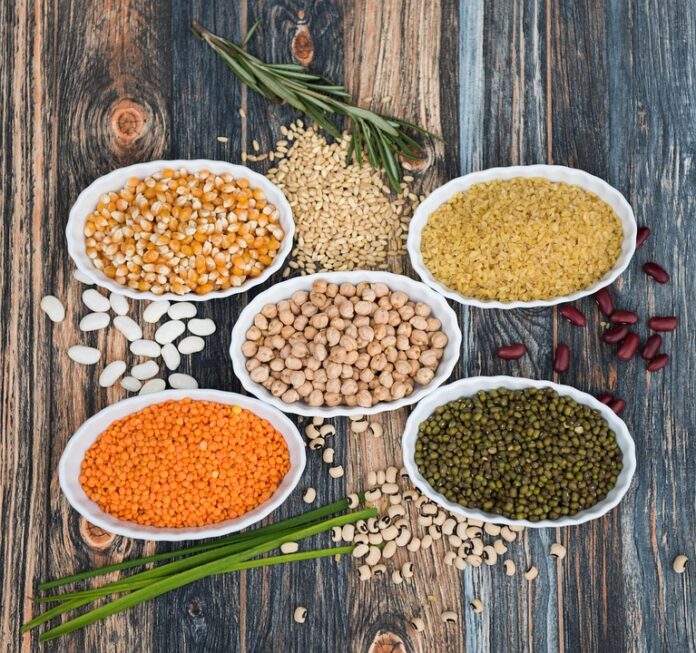Introduction
The global lentil market is a significant sector in the agricultural industry, with numerous countries engaging in both exporting and importing lentils. Lentils are a popular legume due to their high protein and fiber content, making them a staple in many diets around the world. In this report, we will analyze the top lentil exporting and importing countries, identify key players in the market, and discuss the factors that influence the industry.
Top Lentil Exporting Countries
1. Canada
Canada is the world’s largest exporter of lentils, with a significant share of the global market. The country’s favorable climate and fertile soil make it an ideal location for lentil cultivation. In recent years, Canada has been exporting over 1 million metric tons of lentils annually, with key markets including India, Turkey, and Bangladesh.
2. India
India is another major player in the lentil export market, with a strong agricultural sector that produces a variety of lentil varieties. The country exports lentils to countries in Asia, Africa, and the Middle East, with a focus on meeting the demand for pulses in these regions. India’s lentil exports have been steadily increasing, reflecting the growing global demand for this nutritious legume.
3. Australia
Australia is known for its high-quality lentils, which are exported to markets in Asia, Europe, and the Middle East. The country’s lentil exports have been growing in recent years, driven by increasing demand for plant-based proteins and healthy food options. Australia’s lentil industry is supported by advanced farming practices and research, ensuring the quality and sustainability of its lentil production.
Top Lentil Importing Countries
1. India
Despite being a major exporter of lentils, India is also a significant importer of the legume. The country’s growing population and increasing demand for lentils have led to a rise in imports from countries like Canada, Australia, and the United States. India’s lentil imports play a crucial role in meeting the domestic demand for pulses and maintaining food security.
2. Turkey
Turkey is a key importer of lentils, sourcing the legume from countries like Canada, Australia, and the United States. The country’s lentil imports are driven by the growing demand for plant-based proteins and healthy food options among its population. Turkey’s lentil market is competitive, with imported lentils complementing the domestic production to meet the demand.
3. Bangladesh
Bangladesh is a significant importer of lentils, relying on countries like Canada, India, and Myanmar for its supply. The country’s lentil imports have been increasing to meet the demand for pulses in the local market. Bangladesh’s lentil industry is supported by government policies and initiatives to ensure food security and affordability for its population.
Key Players in the Lentil Market
The lentil market is dominated by major players in both exporting and importing countries. Companies like AGT Foods, Simpson Seeds Inc., and JGL Grain are key players in the lentil export market, with a strong presence in countries like Canada, Australia, and the United States. These companies play a crucial role in meeting the global demand for lentils and ensuring the quality and sustainability of the supply chain.
In the importing countries, companies like Olam International, Al Ghurair Foods, and MWT Foods are prominent players in the lentil market, importing the legume from major exporting countries. These companies have a strong distribution network and supply chain management to meet the demand for lentils in their respective markets. Overall, these key players contribute to the growth and stability of the global lentil market.
Factors Influencing the Lentil Market
Several factors influence the lentil market, including climate conditions, government policies, consumer preferences, and global trade dynamics. Climate conditions play a crucial role in lentil production, with favorable weather contributing to higher yields and quality. Government policies and regulations impact the production, import, and export of lentils, shaping the market dynamics.
Consumer preferences for healthy and sustainable food options drive the demand for lentils, with increasing awareness of the nutritional benefits of the legume. Global trade dynamics, such as trade agreements, tariffs, and market trends, also influence the flow of lentils between exporting and importing countries. Overall, these factors interact to shape the competitiveness and growth of the global lentil market.
Conclusion
In conclusion, the lentil market is a significant sector in the agricultural industry, with key players in both exporting and importing countries driving the global trade of this nutritious legume. Countries like Canada, India, and Australia lead in lentil exports, while countries like India, Turkey, and Bangladesh are major importers of the legume. Key players in the market play a crucial role in meeting the global demand for lentils and ensuring the quality and sustainability of the supply chain. Factors like climate conditions, government policies, consumer preferences, and global trade dynamics influence the lentil market, shaping its competitiveness and growth. Overall, the lentil market continues to expand and evolve, meeting the demand for healthy and sustainable food options worldwide.

